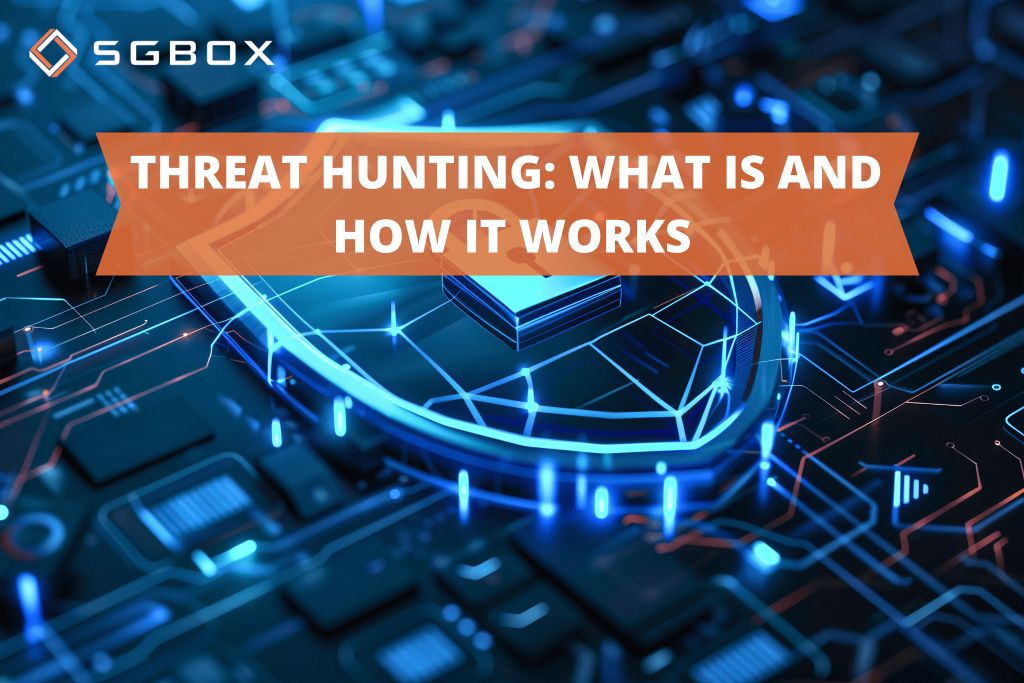Threat Hunting: what it is and how it works

Cyber threats represent one of the biggest challenges for modern companies. In a context where attacks are becoming increasingly sophisticated, protecting data and systems is essential.
In this scenario, the concept of Threat Hunting emerges as a proactive approach to cyber security that is gaining more and more relevance.
But what exactly does Threat Hunting mean, and how can it help small and medium-sized enterprises protect themselves? Let’s find out together.
What Does Threat Hunting Mean?
Threat Hunting can be defined as the proactive search for hidden cyber threats within a company’s system. Unlike traditional defense methods that focus on detecting and blocking known attacks, Threat Hunting actively seeks out those threats that might escape the radar of automated security solutions like antivirus or firewalls.
The term “hunting” is particularly fitting because it implies a deliberate action—a true “hunt” for threats. The goal is not only to detect anomalies but to understand and anticipate the techniques attackers might use to bypass existing defenses.
This approach requires specific skills and a deep understanding of both normal and abnormal behaviors in IT systems.
The Threat Identification Process
The Threat Hunting process is structured in several stages, each essential for the success of the operation. Let’s look at the main steps:
- Information Gathering: the first phase involves collecting data from various sources such as system logs, network traffic, and user behaviors. These data form the basis on which the entire Threat Hunting activity is built.
- Hypothesis Formulation: based on the information collected, threat hunters formulate hypotheses about potential threats that could be present within the company environment. These hypotheses are guided by experience and knowledge of the most common attack techniques.
- Active Investigation: once the hypotheses are formulated, the actual investigation phase begins. Threat hunters analyze the collected data to identify signs of compromise or suspicious activity. This may include log analysis, network connection checks, or user behavior examination.
- Threat Confirmation: if evidence of suspicious activity is found during the investigation, it must be confirmed. This step is crucial to avoid false positives and ensure that resources are allocated only to real threats.
- Response and Mitigation: once the threat is confirmed, the next step is to respond quickly to mitigate the damage. This may include isolating compromised systems, removing malware, or implementing new security measures.
Why Is Threat Hunting Important?
For small and medium-sized enterprises (SMEs), Threat Hunting is a powerful weapon against cyber threats, especially in a landscape where attacks are constantly evolving.
But why is it so important?
- Prevention of Advanced Attacks: many modern cyberattacks are designed to evade traditional defenses. Threat Hunting allows the discovery of these hidden attacks before they can cause significant damage.
- Reduction of Response Times: identifying a threat early means being able to intervene quickly, limiting the impact of the attack and reducing business downtime.
- Continuous Security Improvement: threat Hunting is not a static activity. Each investigation brings new information that can be used to improve existing defenses, creating a virtuous cycle of learning and adaptation.
- Protection of Sensitive Data: SMEs often manage sensitive data of their customers and partners. Threat Hunting helps protect this critical information, safeguarding the company’s reputation.
Threat Hunting vs. Threat Detection
It’s important to distinguish between Threat Hunting and Threat Detection, two terms often used interchangeably but representing different approaches to cybersecurity.
Threat Detection: refers to the automatic detection of threats through tools and technologies that constantly monitor the IT environment. This methodology relies on predefined rules and machine learning algorithms that identify anomalous behaviors.
Threat Hunting: as previously described, is a proactive and manual approach focused on searching for advanced threats that might not be detected by automated tools. Threat Hunting requires human intervention and a deep understanding of the business context.
While Threat Detection is reactive and automated, Threat Hunting is proactive and human-driven.
The two methodologies are not mutually exclusive but rather complement each other to ensure complete protection.
Threat Hunting with the SGBox Platform
For Italian companies, adopting an effective Threat Hunting approach might seem challenging, especially for SMEs that may not have the necessary internal resources. This is where solutions like the SGBox Platform come into play.
SGBox is a Next Generation SIEM & SOAR Platform through which Threat Detection and Threat Hunting processes can be developed, designed to provide companies with the tools needed to protect themselves from cyber threats.
With a combination of automation and human intervention, SGBox allows you to:
- Monitor all activities within the company network in real-time, automatically detecting any anomalies.
- Perform in-depth analyses thanks to the collection and correlation of data from various sources, allowing threat hunters to identify hidden threats.
- Customize security rules based on the company’s specific needs, ensuring tailored protection.
- Reduce response times thanks to an immediate alert system that notifies security managers in case of potential threats.




